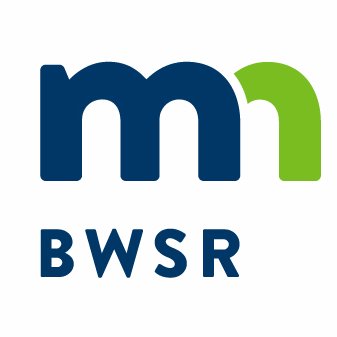Contact: Celi Haga
651-215-9008 (Office)
St. Paul, Minn. —Wrapping up a successful, almost two-year pilot period, the Minnesota Board of Water and Soil Resources’ (BWSR) One Watershed, One Plan program begins the next phase of roll-out this week. The program aligns major watershed boundaries with prioritized, targeted, and measurable watershed plans that are developed and implemented locally.
“The One Watershed, One Plan program is a holistic and coordinated approach to addressing water quality improvements,” BWSR Executive Director John Jaschke said. “The pilot phase has shown that a broad range of stakeholders, including local governments, state agencies, and community members, can come together as true partners and make this planning process work. It’s a more efficient use of resources for local governments that is also good news for our state’s waters.”
Planning assistance available
At its March meeting, the BWSR Board approved the program’s plan content and procedures, which will be used by local governments around the state as they move toward this new approach to water management. As a result, up to $1.5 million in Clean Water Funds is now available for planning grants. These grants are used to support the work of eligible local governments to use a systematic, science-based approach to watershed management to develop plans that provide the greatest environmental benefits to each watershed. The deadline for submittal of grant applications is June 17th, 2016.
Statewide Transition
With a goal set by the Legislature of full statewide transition to One Watershed, One Plan by 2025, BWSR has developed a transition plan to provide guidance to local governments as they begin program work. That plan is now available for public review and comment on the BWSR website: www.bwsr.state.mn.us. Feedback should be submitted by May 4th, 2016.
Program background
Minnesota has a long history of water management by local government. One Watershed, One Plan is rooted in that history and in work initiated by the Local Government Water Roundtable (Association of Minnesota Counties, Minnesota Association of Watershed Districts, and Minnesota Association of Soil and Water Conservation Districts) in 2011 which recommended that the local governments charged with water management responsibility should organize and develop focused implementation plans on a watershed scale. That recommendation was followed by the legislation that would become One Watershed, One Plan, signed into law by Governor Dayton in 2015.
Five pilots were awarded grant funding in 2014:
- Lake Superior North watershed, a two-county area that includes Cook County and Lake County.
- North Fork Crow River watershed, a five-county area that includes parts of Kandiyohi County, Meeker County, Pope County, Stearns County and Wright County.
- Red Lake River watershed, a five-county area that includes parts of Beltrami County, Clearwater County, Pennington County, Polk County, and Red Lake County.
- Root River watershed, a six-county area that includes parts of Dodge County, Fillmore County, Houston County, Mower County, Olmsted County, and Winona County.
- Yellow Medicine River watershed, a four-county area that includes Lac qui Parle County, Lincoln County, Lyon County, and Yellow Medicine County.
For more information
More information about the program, including its guiding principles, operating procedures, the Transition Plan and the program’s boundary map can be found at the One Watershed, One Plan website: http://www.bwsr.state.mn.us/planning/1W1P/index.html. The Request for Proposals for planning grants can be found at http://www.bwsr.state.mn.us/grants/apply/index.html.

